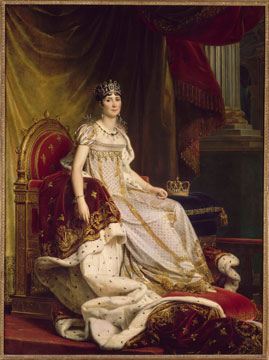'Heritage Rose Foundation Conference 2011 in Lyon' by AmiRoses (Etienne Bouret) - kindly used with permission and under copyright.
The development of the modern rose
The Queen of Flowers, the rose has been grown and loved by man from earliest times.
There are about 125 different species of roses occurring naturally throughout the Northern Hemisphere, from the Arctic to the tropics, with many species freely hybridizing in the wild. The first known representations of roses have been dated somewhere between 1700 and 2000 BC and by about 1200 AD, the earliest domesticated groups, the Albas, Centifolias, Damasks, Gallicas and Scots Roses had already begun to evolve.
For many hundreds of years in European gardens, these early roses grew and most flowered once a year, usually in spring, with an abundance of blooms in lovely delicate colours ranging from white through to pink, purple and maroon. At the end of the eighteenth century, the discovery and importing from China of four China and Tea-scented roses, hybrids and R chinensis, revolutionized rose breeding. These roses, known as the ‘Stud Chinas’, not only flowered repeatedly throughout the year and so introduced the recurrent flowering gene, but they brought yellow and crimson to the previously limited range of colours.

At the same time, the Empress Josephine, wife of Napoleon, was keenly amassing a collection of roses which she planted together in the first recorded ‘rose garden’. With her interest, rose growing became very fashionable and led to amazing and feverish activity among rose breeders. For the first time, they used planning rather than chance to produce roses with desirable characteristics and this resulted in new groups of roses, i.e., Portlands, Boursalts, Bourbons, Hybrid Perpetuals and Noisettes and thousands of new varieties.
In 1867, a cross between a Hybrid Perpetual and a Tea rose created ‘La France’, the first of the Hybrid Tea roses and it is from this line that our modern roses and such favourites as ‘Peace’ have developed. Australia has produced a number of rose breeders, the best known being Alister Clark of ‘Glenara’, Victoria who in the 1920s used R gigantea with selected Hybrid Tea roses of the day to produce such successful and popular roses as ‘Black Boy’ and ‘Lorraine Lee’.
